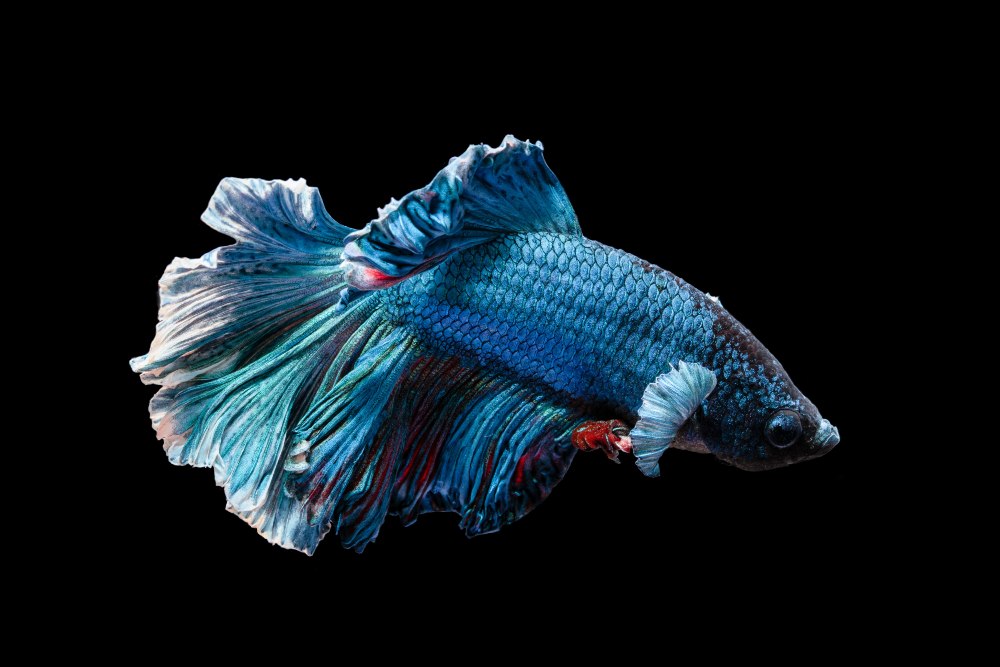Betta fish require special care in order to live a long and healthy life. While betta fish are relatively easy fish to care for, there are some specific necessities that should be noted.
Keep reading this guide for all the information you’ll need to care for your healthy betta fish!
Getting your tank ready
It is important to have your tank ready to introduce your new siamese fighting fish. This includes choosing the right tank, getting the water parameters ready, and adding plants into the tank.
Best betta fish tank
Before getting your betta fish, you’ll need to pick out a tank. Your tank size may vary, depending on if you want a community tank or a sole betta tank.
For one betta fish, it is recommended to have a minimum tank size of five gallons, but it is always preferred to go as big as you can.
Betta fish are labyrinth fish, which means they breathe water from above the surface. When choosing a tank for your new betta, it is important to have a tank that enables your fish to swim to the surface to gulp air.

Water parameters
Betta fish tanks need to have a water filter in them. Without a filter, bacteria and harmful ammonia can build up in the tank, resulting in diseases or even death of your betta fish.
Temperature and pH level
Your aquarium water should have a somewhat acidic or neutral pH level, somewhere between 6.8 and 7.5. This number will vary depending on if there are other fish in the tank with different requirements, but should generally be around 7.
Betta fish like to live in warm water because they are tropical fish. Their natural habitat is quite warm, and because of this, you will need an aquarium heater to maintain the water temperature.
Use an aquarium safe thermometer to ensure the water temperature is between 75 – 80°F. This can also vary if you have a community tank, but betta fish thrive in a stable environment with little temperature changes and pH level changes.
Tap water treatment
While you can use tap water for your betta’s tank, it is crucial that you treat it beforehand. Tap water has harmful chemicals in it, and these chemicals need to be removed before your betta fish can live in it safely.
To successfully treat your tap water, purchase a dechlorinator and a water conditioner. This will ensure your tank water is safe for your betta fish to thrive in.
Should I add aquarium salt?
Aquarium salt can also be added to the tank, but is not necessary. Aquarium salt can be beneficial if used correctly, but detrimental if misused.
You can add one tablespoon of salt per five gallons of water to your betta tank. This salt can sometimes help cure mild cases of some common betta fish diseases.
Depending on the types of other fish and plants you have in your tank, adding aquarium salt may not be recommended.

Plants for betta fish
Betta fish love to have live plants in the tank. It provides them with a place to hide, and they help to purify the tank’s water.
There are many plants that can be included in the tank for your betta fish.
Marimo moss balls
Marimo moss balls are among the top choices for betta fish tanks. They are inexpensive and unique, making them a desirable addition to your tank. These moss balls are actually a form of algae, and are very easy to care for. They help keep good bacteria and reduce nitrate levels in the tank. Put them in the tank where there is low light, and they will thrive!

Java ferns
Java ferns are also a popular addition to many aquarist’s tanks. These plants have long leaves, and can grow almost anywhere in the tank. They are low maintenance, and provide a great place for your betta fish to hide within. Java ferns prefer low to medium light, and do great attached to a piece of driftwood in your tank!
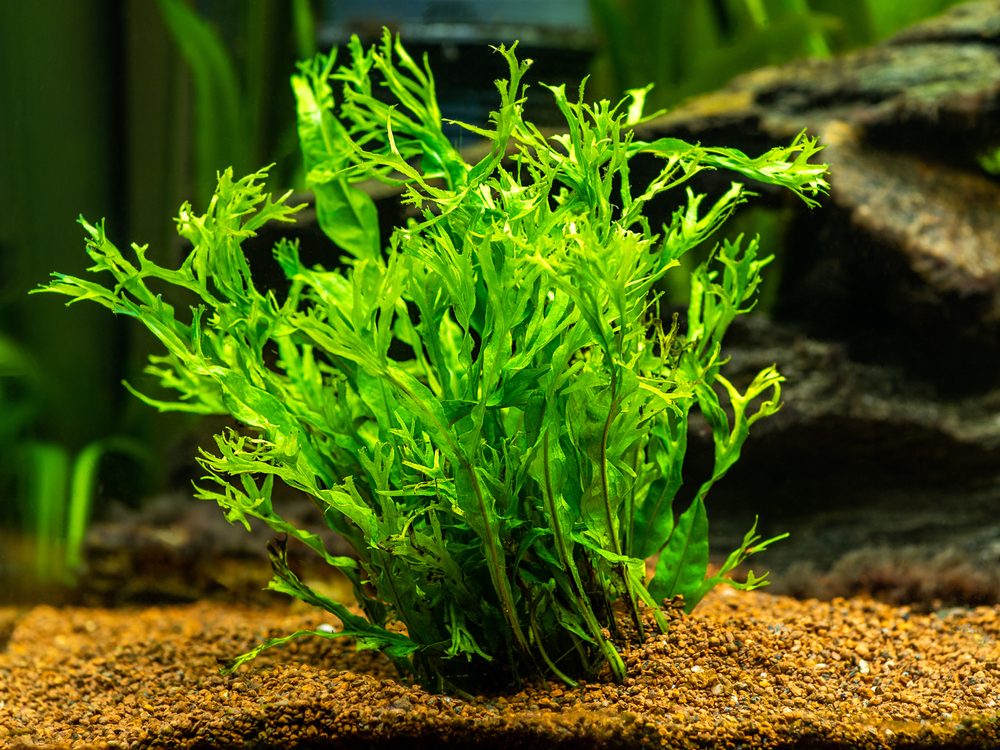
Hornwort
Hornwort is another easy to care for plant that can be added to your betta tank! This plant serves as a great hiding spot for your betta, and adds a beautiful deep green color to your tank. Hornworts are very hardy plants and are beginner friendly. The only thing you have to do to care for it is trim it as they can grow quite big.
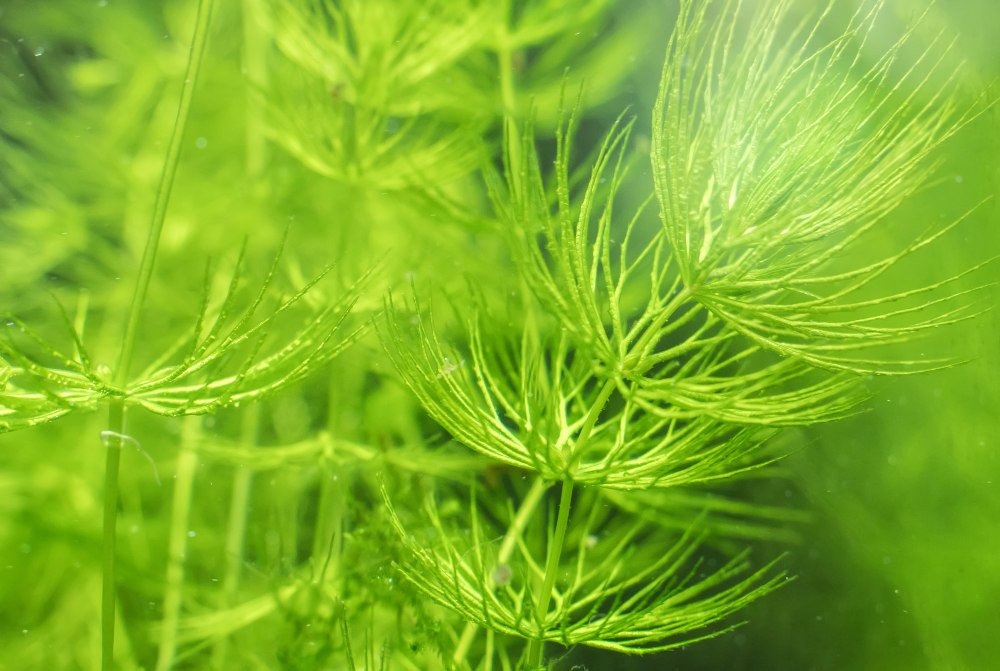
Amazon Sword
Another popular plant among aquarists is the amazon sword. This plant has large leaves that bettas love to hide in. It should be rooted in the tank to ensure it stays sturdy.
Be sure to keep this plant in a big tank so it has room to grow, and in an area with lots of light for it to thrive!

Fake plants
There are many fake plants that you can add to make your betta tank more visually appealing. Ensure these plants are soft so your bettas fins and tail do not get damaged.
Silk plants are a great choice because they flow like real plants, are relatively inexpensive, and do not get eaten by the tank mates.
The downside to fake plants is that they do not provide the tank with oxygenation and nitrate reduction as real plants do.

Housing multiple betta fish
Betta fish are very territorial fish. This means it is risky to keep a female and male betta fish together in the same tank. Male and female betta fish can only live together for a short period of time, and only during mating season. Even then, this mating process can be tricky, and only experienced aquarists should consider it.
If you decide to keep a male betta fish and female betta together, you should get at least a 15-gallon tank, and include a divider to ensure the safety of both betta fish.
Two male bettas should never live in the same betta tank, as they will fight until one male betta dies.
If housing a male and a female betta fish together, it is best to have at least a 15-gallon tank.
Two or more female betta fish can live together in the same tank—this is called a sorority. If you are keeping two or more together, it is recommended to have at minimum a ten gallon tank. Ensure there are many places for the bettas to hide by providing plants throughout the tank.

How to acclimate your betta fish
It is crucial to slowly adjust your new betta fish to your tank temperature and other tank conditions. Transferring your betta from a cup or bag from the fish store into your tank slowly helps your betta better adapt to its new conditions and surroundings. This process is called acclimation.
Without properly completing the acclimation process for a betta fish, you could put your betta into shock and cause serious harm to the health of your new fish. The process is easy and takes only a short amount of time.
To start, put the bag with your betta fish in it inside of the betta’s tank, and let it float in the tank. This process helps to adjust the betta fish to the water temperature in the tank. This step can take around 15 minutes to ensure the temperatures in the bag and in the tank are similar.
Next, open the bag that your new betta fish is being transported in, and add about half a cup of water from your tank into the bag. Let this sit for around ten minutes, then add another half a cup of tank water into the bag. Repeat this step one more time, letting your fish get used to the tank water conditions in the bag it was transported in.
After you have completed that process, you can slowly release your siamese fighting fish into its new home. Do this by tilting the bag sideways in the tank, trying not to add too much of the water from the bag into the tank.
This process can also be done if your betta has come home in a hard container as well.
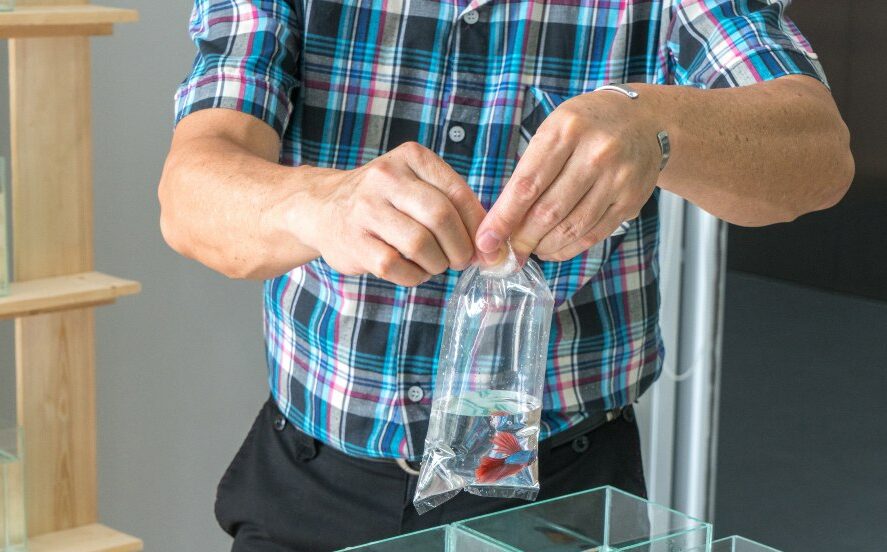
How to clean your tank
Tank maintenance
How often you clean your betta’s tank will be dependent on a few different things, such as how big the tank is, if there is a filter, and how many other fish you have in the tank.
On average, tanks with a filter should be fully cleaned every six to eight months, and tanks without a filter should be cleaned every five to six weeks. This is one of the reasons it is recommended you keep a filter in your betta tank.
Before you clean your tank, get a bucket of water and let it sit for 24 hours. This will bring the water to room temperature.
When you’re ready to clean, remove your betta fish and place them in a container in the same water from their tank.
To fully clean your betta tank, start by unplugging everything and removing all decorations. You can clean this decorations with a toothbrush to get off all the algae and residue.
Next, remove all the water from the tank, but keep in in a bucket nearby. You will only be changing around 20% of the water if you have a filter as recommended.
Remove the pebbles from the tank, and clean with a toothbrush. Use your gravel vacuum to clean up any debris that may be sitting in the gravel. This is also the time to clean and replace the filter in your tank.
Finally, clean the walls of the aquarium from any algae or debris. You may need an algae scrapper for this.
After all these steps are complete, your fish tank is clean! You can start to reassemble your tank.
Put 80% of the old water back into the tank. Grab your bucket of room temperature water and add water conditioner to water to remove chlorine or any other toxins. You may have to treat the tap water to get the right pH level to 6.8-7.5. Pour about 20% new water into the tank, filling it up.
Add back all the decorations into the tank. Make sure your tank’s water is between the temperatures of 75 to 80 degrees F before adding your betta back in!

Water changes
In between full tank cleans, you should be doing regular water changes in your betta tank. This is to ensure great water quality for your betta fish. You should be doing this weekly!
If you have a filter as recommended, change around 20% of the water in your betta tank. If you don’t have a filter, change around 30%-50% of it to lessen the shock your fish would experience.
Algae growth
Algae naturally grows in fish tanks, but should be monitored and taken care of if it starts to grow rapidly.
There can be an overgrowth of algae in your tank if there is too much light or nutrients. If your tank is placed in front of a window, algae can start to rapidly spread throughout your tank. Overfeeding can also cause algae growth as the uneaten food begins to decay.
There are a few different ways to clean an overgrowth of algae in your tank.
First, you can get an algae scrubber to get algae off of the glass in your tank.
Next, you will need to remove the decorations in your tank and get rid of the algae on them. You can usually do this by using hot water, but a 5% bleach to 95% water mixture also works for harder to clean areas.
You can also get some tank mates to help with algae in the tank, such as snails or catfish!
Adequate filtration
It is highly recommended that betta tanks have a suitable filter to slow the buildup of ammonia and other harmful chemicals. Keep in mind that there are betta fish filters and you need to get one suitable for betta fish, otherwise the wrong filter will disrupt their environment.
Without a filter, your betta can get sick from an increased amount of bacteria in the tank.
Filters also introduce more oxygen into the water, creating a healthy environment for your fish to live in!
Including a filter in your tank will ensure that your hands-on tank cleaning is down to a minimum, which will keep you and your fish happy.
Shock after water change
Betta fish could go into shock after a wter change due to a lower temperature in the tank. To help your betta come out of shock, slowly add warm water to the tank until it reaches a water temperature is between 75 – 80°F.

Feeding your betta fish
Betta fish are carnivores, meaning they eat a high protein diet. In the wild, they feed off of insects. They need food specific to their diet, whereas tropical fish food may not provide the necessary nutritional values to them.
When it comes to feeding your betta fish, you should give them two to four pellets per feeding, with feedings happening one to two times per day.
It is important to pick the right food for your betta fish. Many fish stores have specific betta fish flakes, and it is recommended to get something like this to ensure your betta is getting the right amount of nutrients.
Bloodworms are a delicious treat for your betta fish to enjoy. While they are delicious and have some nutritional value to your betta, they should not be the main source of food, and only given as an alternative to their food once or twice per week.
Freeze dried brine shrimp are also a nutrious treat for your betta fish to eat. These can be given a couple times a week as an alternative to their food.
Betta fish can go without food for around two weeks. There may be many reasons why your betta is not eating, such as stress or disease. It is generally okay if they miss one or two meals, but you may need to consult a vet if your betta goes without food for more than two weeks.
It is also important not to overfeed your betta. This can lead to obesity in your fish, and a dirty tank from uneaten pellets.

Habits of the betta fish
Bubble nests
A bubble nest is a cluster of bubbles at the surface of the water in your bettas tank. Bettas make bubble nests as a sign they are healthy and fertile.
Bubble nests are created by tiny bubbles held together by water. Bettas use their labyrinth organ to take in air, blow a bubble, and then coat it in their saliva for protection. They continue this process until there is a cluster of bubbles creating a nest.
Typically, the male betta fish create these bubble nests, but in some instances the female betta fish will create them as well.
These bubble nests indicate that your betta is ready to reproduce. They are created to keep the eggs in an oxygen-rich environment. The male bettas will collect the eggs in its mouth from the female bettas, and then drop the eggs inside the bubble nests. He will guard this nest until the eggs hatch.
It is best if the bubble nest can be left alone while cleaning the tank, but your betta can create it again if the bubble nest needs to be removed.
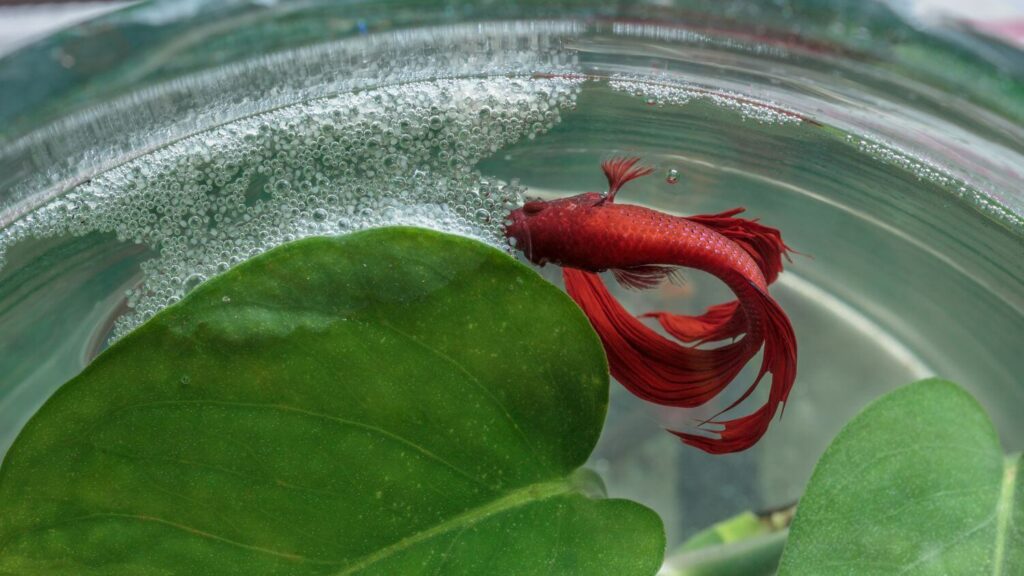
Hiding
There are a few reasons your betta fish may be hiding. Some are completely normal, while others may require some attention. Let’s look at some reasons below.
Your betta is stressed
Bettas can hide more often if they are stressed or depressed. This typically happens if their needs are not being met, or if they are simply bored with their environment.
By adding new things to the tank, such as new plants, decorations, or tank mates, you can reduce your bettas depression and get them out of hiding.
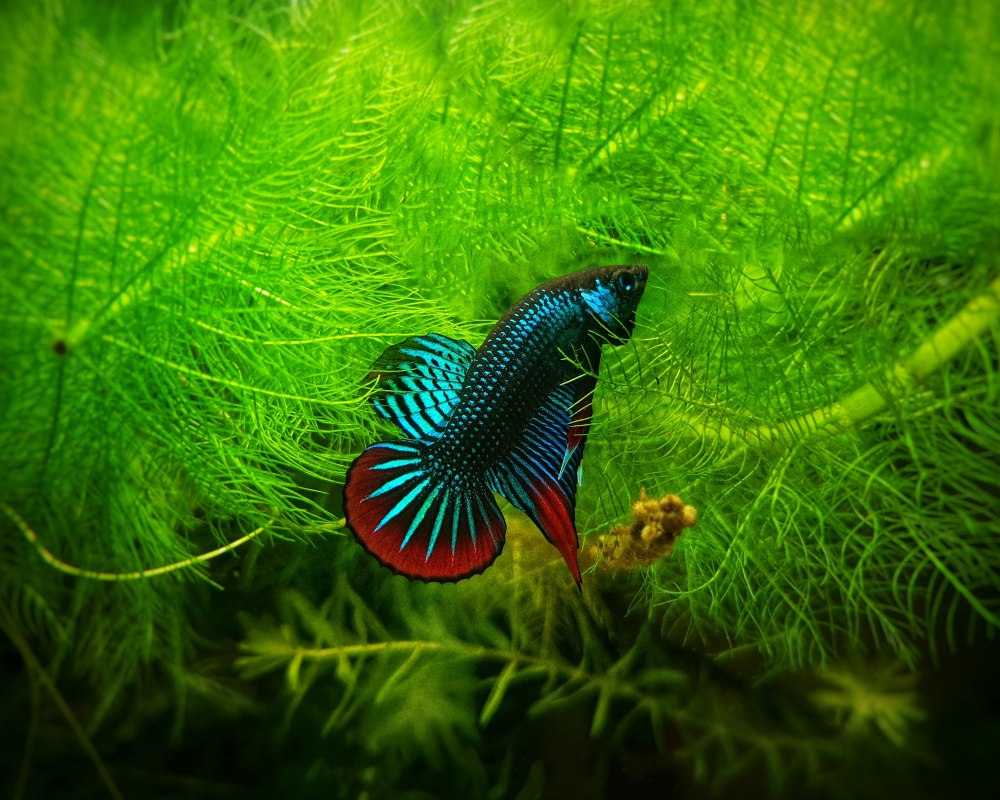
The filter is too strong
Bettas have a hard time swimming against strong currents, so it is neccessary to ensure the filter in the tank is not too strong.
If you notice your betta is hiding a lot more, this could be because they are unable to swim against the current.
Angle the filter differently, or get a filter sponge to slow the rate of filter in the tank and reduce the current.
There is too much light in the tank
Bettas natural habitat is in a dark and covered area, so this is what they prefer in a tank setting as well.
By creating a darker environment for your betta, you can make them more comfortable and get them out of hiding.
Your betta has just been introduced to the tank
If your betta is new, they may hide more than you would expect. This is completely normal, and unfortunately there isn’t much of a solution for this other than waiting it out. Your betta will eventually get adjusted to its new environment and tank mates, and will be out of hiding before you know it!
Your betta is sick
If your betta fish is unwell, they may hide more than usual.
Check your betta fish for any symptoms of illness, and treat if neccessary.
Betta fish lifespan
Betta fish live for about two to five years with proper care. This does depend on which breed of siamese fighting fish you have, and the tank conditions in which they are living.
By keeping their tanks clean and ammonia free, and giving them a well-balanced and nutritious diet, you can ensure your betta fish lives a long and healthy life.
There have been some reports of bettas living seven to ten years, but this is definitely unusual and not a realistic lifespan for the majority of betta fish.

